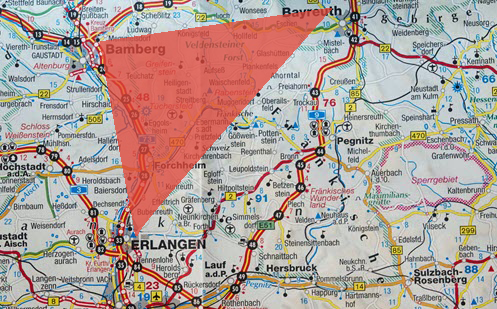Planning tool
Expected level of development
Australian Curriculum Mathematics V9: AC9M8M01
Numeracy Progression: Understanding units of measurement: P9
At this level, students build on their knowledge of the area and perimeter of rectangles, parallelograms and triangles to rhombuses, kites and trapeziums. They identify and use the formulas for these to solve problems.
Students should develop a conceptual understanding of perimeter and area, rather than simply learn the formulas. Students can use hands-on activities such as drawing shapes on square centimetre paper, measuring and cutting.
Students are shown how to partition composite shapes into simpler two-dimensional (2D) shapes such as triangles and rectangles, calculate the area of each shape using the appropriate formula, and then combine these calculated areas to give the total area of the composite shape.
This topic will use, develop and apply students’ prior knowledge of substitution into a formula, forming an algebraic expression and operating with rational numbers.
Teaching and learning summary:
- Build on students’ understanding of the area of rectangles and triangles.
- Use the perpendicular height to develop the formulas for the area of various quadrilaterals.
- Use these formulas to solve area problems.
- Recognise and distinguish between the different quadrilaterals in various orientations.

Students:
- use a formula to find the perimeter and area of a quadrilateral
- solve problems involving the perimeter and area of a plane shape
- recognise and distinguish between the different quadrilaterals in various orientations
- dissect composite shapes into familiar shapes so they can calculate the area
- solve problems involving the perimeter and area of composite shapes.
Students may:
- confuse the length of a side with a diagonal.
- confuse area and perimeter.
- not use the correct units of measurement. Clarify the units of measurement between area and perimeter. When modelling area and perimeter problems, make the correct use of units explicit.
- believe that only regular shapes have a perimeter and area. Giving students opportunities to estimate and find perimeters and areas (using square centimetre paper) of irregular shapes is important to support student understanding.
- confuse the different quadrilaterals. Use concrete pattern blocks and have students rotate, reflect and compare these to deepen their understanding of the properties of the different shapes and to assist in their recognition.
- believe that length × width will find the area of any shape, not just a rectangle. Use square centimetre paper and have students prove different area formulas will support their understanding that different shapes have different area formulas.
- confuse which height to use when calculating the area of a triangle or parallelogram – using the slanted height rather than the perpendicular height.
- misread m2 (and similar units squared), not realising it refers to ‘square metre(s)’.
The Learning from home activities are designed to be used flexibly by teachers, parents and carers, as well as the students themselves. They can be used in a number of ways including to consolidate and extend learning done at school or for home schooling.
Learning intention
- I am learning to find the perimeter and area of shapes.
- I will solve area problems using the formula.
Why are we learning about this?
If you can develop a conceptual understanding of perimeter and area rather than simply applying a rule, you will be more successful solving problems in your textbook and, more importantly, in real life. Imagine you work in real estate and a customer asks you the perimeter of a block of land. These are measurements you need to understand, measure and explain.
What to do
- View the webpage, Can they be equal?
- Consider the relationship between the area and perimeter of each rectangle and record your answers.
- Complete the challenge – find rectangles whose area and perimeter are numerically the same.
- Gather evidence and record in a table to share solutions with the group when we meet next.
Success criteria
- I can use the formulas to find the perimeter and area of shapes.
- I solve practical problems involving the perimeter and area of a plane shape.
- I recognise and distinguish between the different quadrilaterals in various orientations.
Please note: This site contains links to websites not controlled by the Australian Government or ESA. More information here.
Teaching strategies
A collection of evidence-based teaching strategies applicable to this topic. Note we have not included an exhaustive list and acknowledge that some strategies such as differentiation apply to all topics. The selected teaching strategies are suggested as particularly relevant, however you may decide to include other strategies as well.
-

Concrete, Representational, Abstract (CRA)
The CRA model is a three-phased approach where students move from concrete or virtual manipulatives, to making visual representations and on to using symbolic notation.
Go to resource -

Explicit teaching
Explicit teaching is about making the learning intentions and success criteria clear, with the teacher using examples and working though problems, setting relevant learning tasks and checking student understanding and providing feedback.
Go to resource -

Questioning
A culture of questioning should be encouraged and students should be comfortable to ask for clarification when they do not understand.
Go to resource -

Worked examples
A worked example is not just a pre-worked question that is given to the students. There are several types of worked examples and ways of using them.
Go to resource
Teaching resources
A range of resources to support you to build your student's understanding of these concepts, their skills and procedures. The resources incorporate a variety of teaching strategies.
-

Making triangles
In this lesson, students investigate various combinations of three natural numbers to explore the concept of triangle inequality.
Go to resource -

Using units of measurement
This resource focuses on area, perimeter, circumference and volume. Teachers are shown how to structure their questions so that students are guided to success in solving problems and understanding new concepts.
Go to resource -

Teacher guide: Year 6 area and perimeter
A simple guide that explains the basics of area and perimeter.
Go to resource